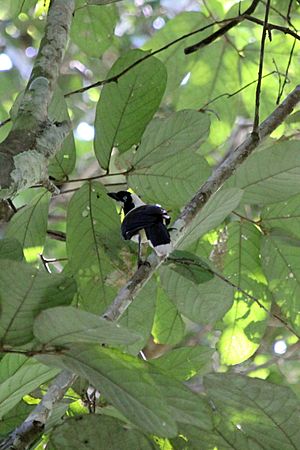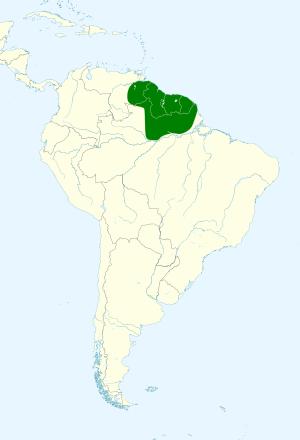Cayenne jay facts for kids
Quick facts for kids Cayenne jay |
|
|---|---|
 |
|
| Conservation status | |
| Scientific classification | |
 |
|
| Synonyms | |
|
Corvus cayanus Linnaeus, 1766 |
The Cayenne jay (Cyanocorax cayanus) is a fascinating bird that belongs to the Corvidae family. This family includes well-known birds like crows and other jays. You can find these birds living in several countries in South America. These include Brazil, French Guiana, Guyana, Suriname, and Venezuela.
Cayenne jays prefer certain types of places to live. Their natural habitats are warm, wet forests, especially those in low-lying areas. They also live in dry, bushy lands called shrublands. Sometimes, you can even spot them in areas where forests used to be, but have been changed by people.
Contents
Discovering the Cayenne Jay
Early Descriptions
The Cayenne jay was first described a long time ago. In 1760, a French zoologist named Mathurin Jacques Brisson wrote about it. He based his description on a bird he found in Cayenne, which is in French Guiana. Brisson gave the bird a French name, Le geay de Cayenne. He also gave it a Latin name, Garrulus Cayanensis.
Linnaeus and Scientific Names
Later, in 1766, a famous Swedish naturalist named Carl Linnaeus updated his important book, Systema Naturae. In this book, Linnaeus added many new species that Brisson had described. One of these was the Cayenne jay. Linnaeus gave it a shorter, two-part scientific name: Corvus cayanus. This type of naming is called binomial nomenclature. It helps scientists around the world use the same name for each species.
Modern Classification
Today, the Cayenne jay is placed in a different group of birds. It belongs to the genus Cyanocorax. This group was created by a German zoologist named Friedrich Boie in 1826. Scientists do not currently recognize any different types or subspecies of the Cayenne jay. This means all Cayenne jays are considered to be the same kind of bird.
See also
 In Spanish: Chara de Cayena para niños
In Spanish: Chara de Cayena para niños


